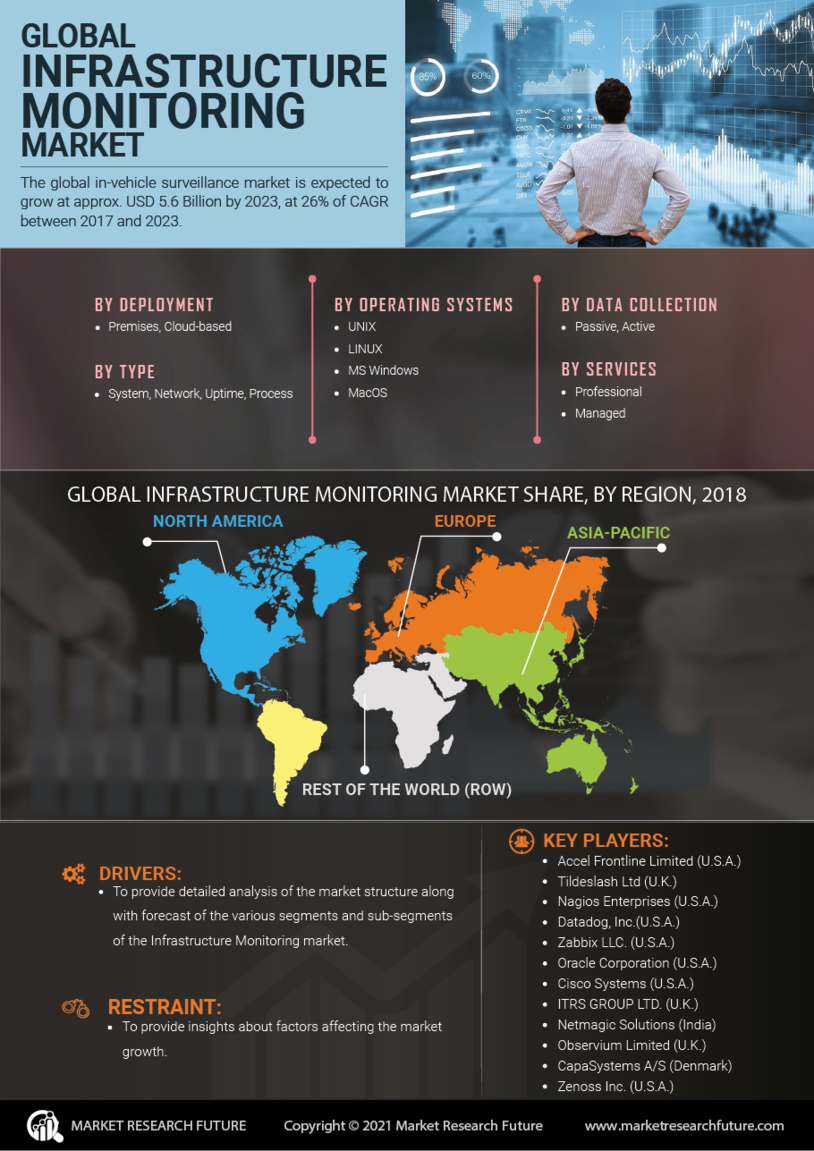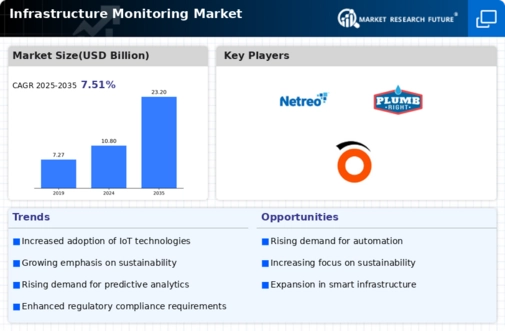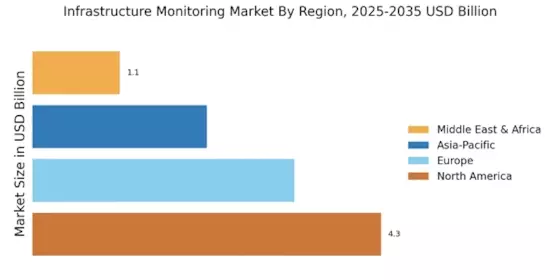Rising Demand for Infrastructure Resilience
The increasing frequency of extreme weather events and natural disasters has heightened the need for resilient infrastructure. As cities and regions face challenges from climate change, the Infrastructure Monitoring Market is witnessing a surge in demand for solutions that can assess and enhance the durability of critical assets. According to recent estimates, the market for infrastructure monitoring solutions is projected to grow at a compound annual growth rate of over 10% through the next five years. This growth is driven by the necessity for real-time data to inform maintenance and repair decisions, thereby reducing downtime and extending asset life. Stakeholders are increasingly investing in advanced monitoring technologies to ensure that infrastructure can withstand environmental stresses, which is likely to shape the future landscape of the Infrastructure Monitoring Market.
Regulatory Pressures and Compliance Requirements
The Infrastructure Monitoring Market is increasingly influenced by regulatory pressures and compliance requirements. Governments and regulatory bodies are establishing stringent standards for infrastructure safety and performance, necessitating the adoption of monitoring solutions. Organizations are compelled to invest in technologies that ensure compliance with these regulations, which can vary significantly across regions and sectors. The need for continuous monitoring and reporting is becoming a standard practice, thereby driving demand for advanced monitoring systems. Analysts predict that the compliance-driven market could account for a substantial portion of the Infrastructure Monitoring Market, as organizations seek to mitigate risks associated with non-compliance and enhance their operational credibility.
Increased Investment in Infrastructure Development
Governments and private entities are significantly increasing their investments in infrastructure development, which is a key driver for the Infrastructure Monitoring Market. With urbanization and population growth, the need for robust infrastructure has never been more pressing. Recent reports indicate that infrastructure spending is expected to reach trillions of dollars over the next decade, creating a substantial market for monitoring solutions. This influx of capital is likely to facilitate the implementation of advanced monitoring technologies that ensure the safety and longevity of new projects. As stakeholders prioritize the integration of monitoring systems into their infrastructure projects, the Infrastructure Monitoring Market is poised for substantial growth, driven by the necessity to safeguard investments and enhance operational efficiency.
Technological Advancements in Monitoring Solutions
The Infrastructure Monitoring Market is experiencing a transformative phase due to rapid technological advancements. Innovations such as Internet of Things (IoT) sensors, artificial intelligence, and machine learning are revolutionizing how infrastructure is monitored. These technologies enable real-time data collection and analysis, allowing for proactive maintenance and timely interventions. The integration of these advanced solutions is expected to enhance the accuracy and efficiency of monitoring systems, thereby reducing operational costs. Market analysts suggest that the adoption of smart monitoring solutions could lead to a reduction in maintenance costs by up to 30%. As organizations seek to optimize their infrastructure management strategies, the demand for sophisticated monitoring solutions is likely to escalate, further propelling the growth of the Infrastructure Monitoring Market.
Focus on Asset Management and Lifecycle Optimization
The emphasis on effective asset management and lifecycle optimization is becoming increasingly pronounced within the Infrastructure Monitoring Market. Organizations are recognizing the importance of monitoring systems in extending the lifespan of infrastructure assets and optimizing their performance. By leveraging data analytics and monitoring technologies, companies can make informed decisions regarding maintenance schedules and resource allocation. This proactive approach not only minimizes unexpected failures but also enhances overall operational efficiency. Market trends indicate that organizations implementing comprehensive asset management strategies can achieve cost savings of up to 20%. As the focus on lifecycle management intensifies, the demand for sophisticated monitoring solutions is likely to grow, further driving the Infrastructure Monitoring Market.

















Leave a Comment